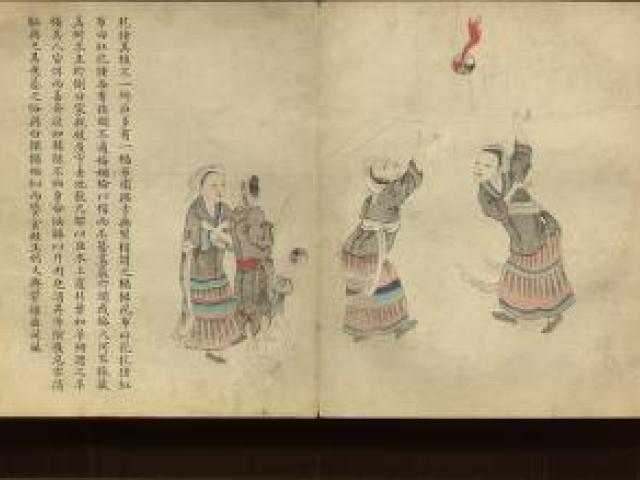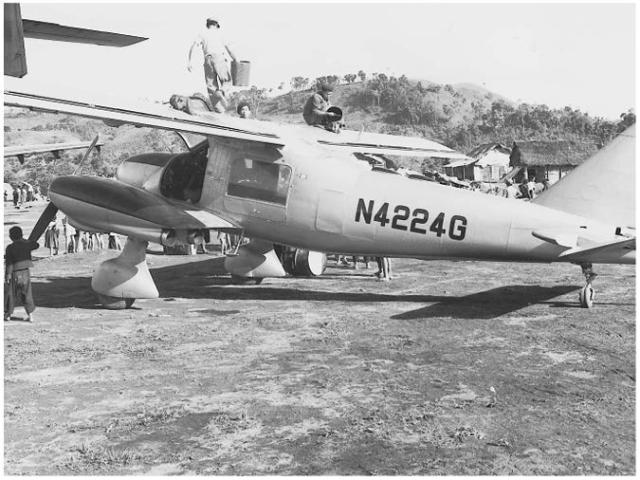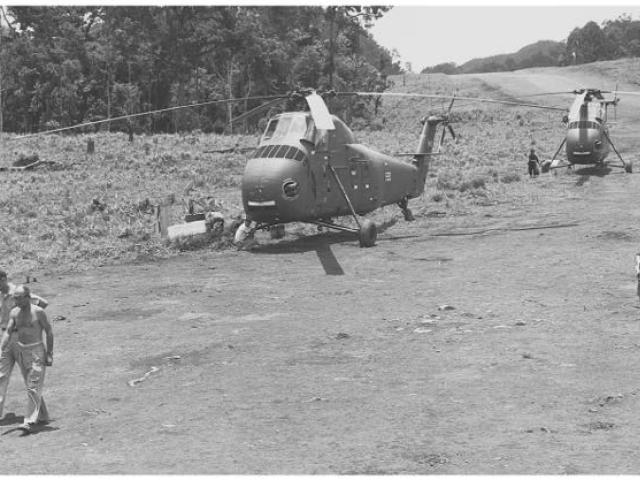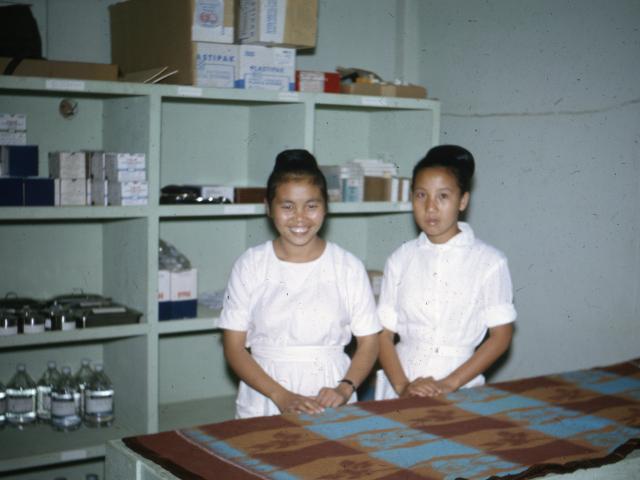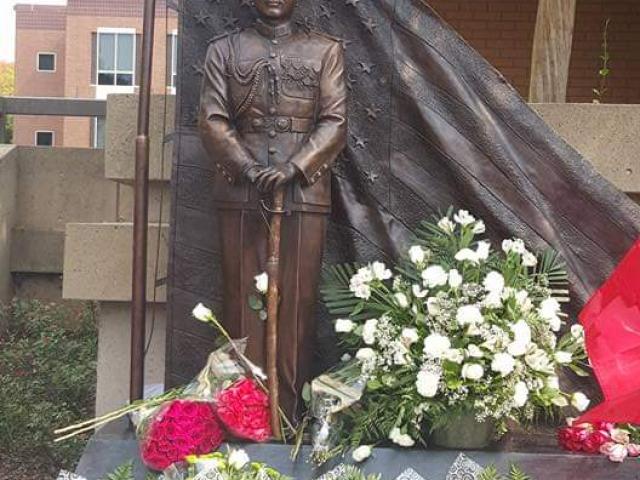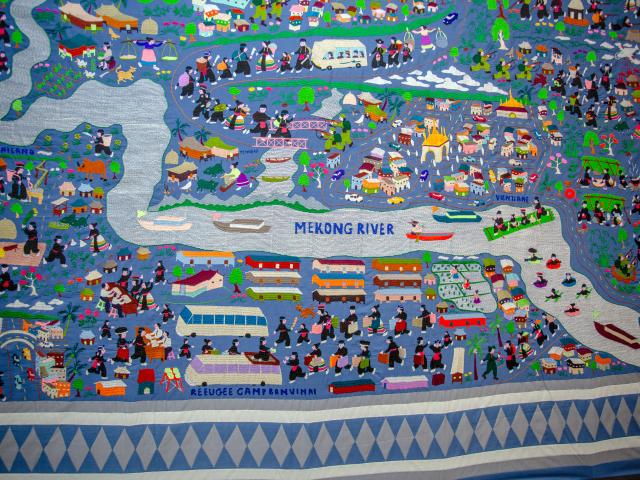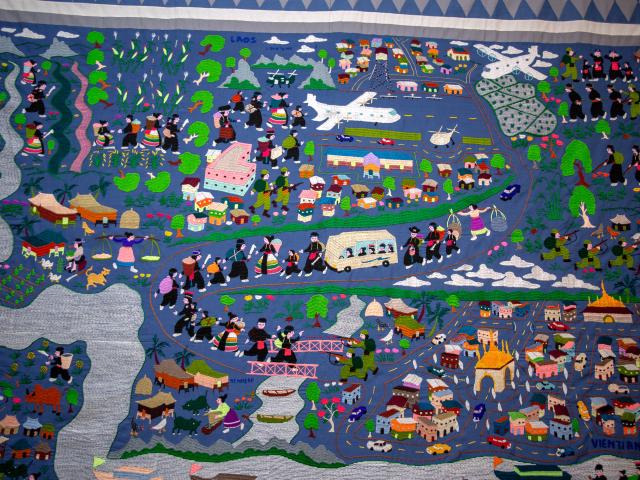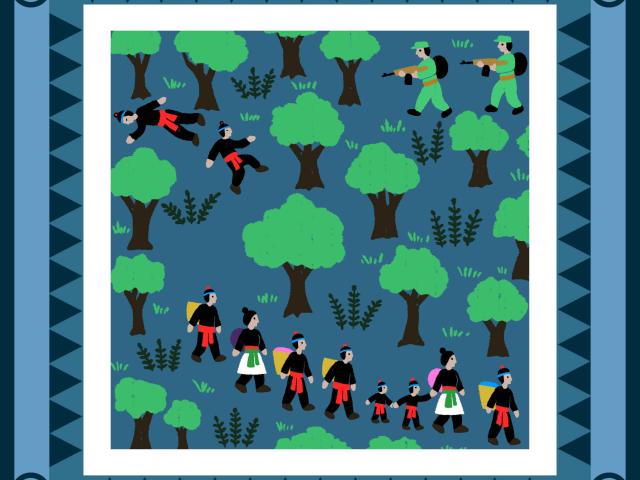Area of Study 2: Hmong Histories
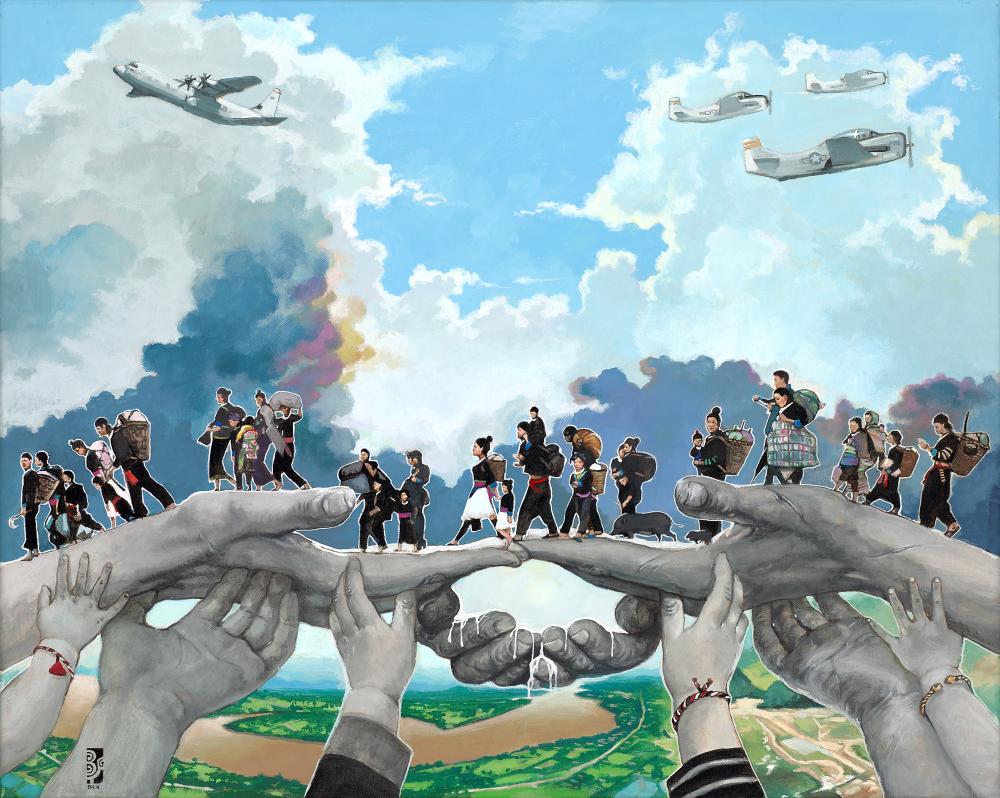
Description of Artwork: During the Vietnam War, the United States' Central Intelligence Agency (CIA) recruited groups of marginalized communities in Laos, with the Hmong people as the largest group of recruits, to navigate the lack of infrastructures and jungles in Southeast Asia. They were led by Vang Pao, former general in the Royal Army of Laos, who was a bridge between the Hmong people and the United States government. As the Hmong people demonstrate, their history is more than just the relationships between Vang Pao and the CIA, Hmong history is carrying the resiliency of our ancestors (as pictured with the hands). Image credit goes to Boon Ma Yang created specifically for the Hmong History and Cultural Studies Model Curriculum.
Hmong Histories: A Critical Perspective
A critical perspective on Hmong history is necessary because people who are Hmong have mainly been portrayed and characterized by outsiders and scholars as primitive, backward, and warrior-like. These characterizations are one-dimensional stereotypes that obfuscate the agency of Hmong as historical actors, the complexity of their history as stateless people, and the ways in which they have been oppressed and subjugated by dominant groups and forces of colonization and imperialism in China and Southeast Asia.
